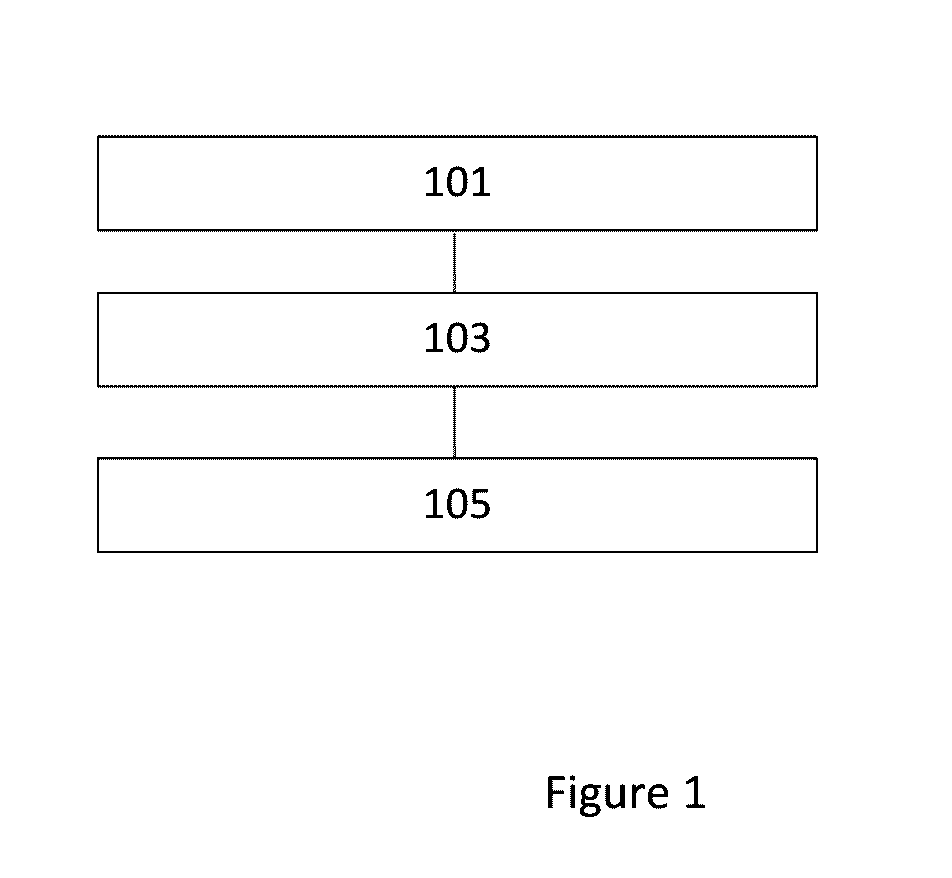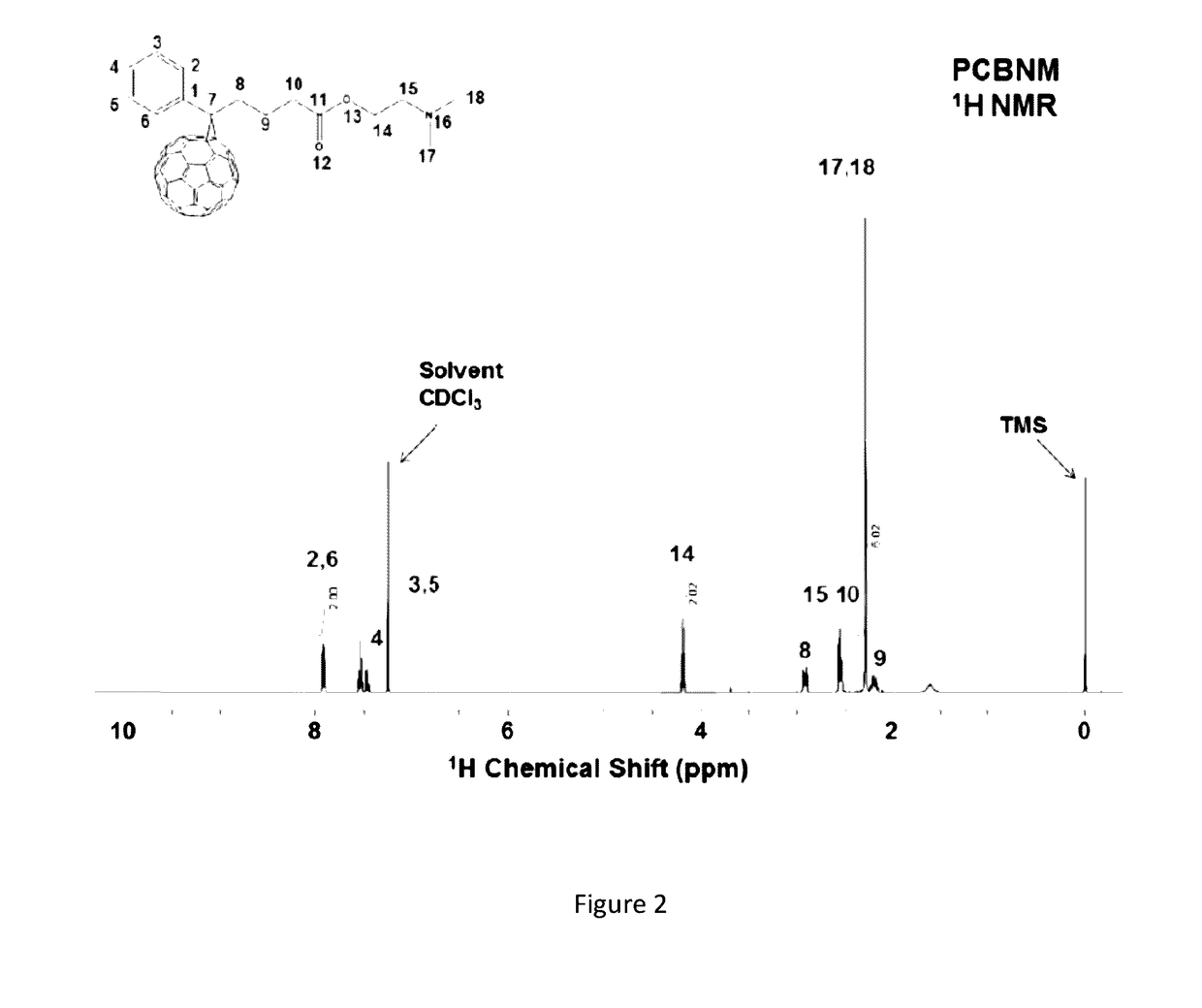Process of manufacturing an electron transport material
a technology of electron transport and electron transport material, which is applied in the preparation of amino compounds, amino preparations from amines, organic chemistry, etc., can solve the problems of low and achieve high short-circuit current density and fill factor
- Summary
- Abstract
- Description
- Claims
- Application Information
AI Technical Summary
Benefits of technology
Problems solved by technology
Method used
Image
Examples
example 1
[0022][6,6]-Phenyl-C60-butyric acid methyl ester (0.25 g, 0.274 mmol) was dissolved in 1,2-dichlorobenzene (12 mL) in a dry schlenk flask under argon. Dibutyltin(IV) oxide (0.014 g, 0.055 mmol) was added in one portion. 2-(Dimethylamino)ethan-1-ol (2 mL) was added in one portion and the solution heated to 150° C. for two hours. The solution was cooled and poured directly onto silica gel and eluted with toluene until all the 1,2-dichlorobenzene had flushed through. Then 6:1 toluene / triethylamine was eluted through to obtain pure product that was further purified by dissolving in chloroform (˜4 mL) and allowing methanol to slowly diffuse into the solution to form brown crystals of [6,6]-phenyl-C60-butyric-N-2-dimethylaminoethyl ester (0.293 g, 55% yield).
example 2
[0023][6,6]-phenyl-C60-butyric-N-2-dimethylaminoethyl ester (0.05 g, 0.052 mmol) was dissolved in dry tetrahydofuran (2 mL) in a dry sealable vessel under argon. Iodomethane (1.5 mL) was added in one portion and the vessel was sealed. The solution was heated to 60° C. for 18 hours. The solution was cooled and opened to allow all liquids to evaporate. The solid residue was suspended in methanol, diluted with acetone, and centrifuged. This process was repeated two more times to produce pure [6,6]-phenyl-C60-butyric-N-2-trimethylammonium ethyl ester iodide as a metallic green powder.
NMR Spectroscopy
[0024]Nuclear magnetic resonance spectroscopy was performed on a 400 NMR spectrometer, operating at 400.16 MHz for 1H, and 100.04 MHz for 13C.
[0025]FIG. 2 depicts [6,6]-phenyl-C60-butyric-N-2-dimethylaminoethyl ester at 1H NMR.
[0026]FIG. 3 depicts [6,6]-phenyl-C60-butyric-N-2-dimethylaminoethyl ester at 13C NMR.
[0027]FIG. 4 depicts [6,6]-phenyl-C60-butyric-N-2-trimethylammonium ethyl ester i...
PUM
| Property | Measurement | Unit |
|---|---|---|
| Temperature | aaaaa | aaaaa |
| Temperature | aaaaa | aaaaa |
| Thickness | aaaaa | aaaaa |
Abstract
Description
Claims
Application Information
 Login to View More
Login to View More - R&D
- Intellectual Property
- Life Sciences
- Materials
- Tech Scout
- Unparalleled Data Quality
- Higher Quality Content
- 60% Fewer Hallucinations
Browse by: Latest US Patents, China's latest patents, Technical Efficacy Thesaurus, Application Domain, Technology Topic, Popular Technical Reports.
© 2025 PatSnap. All rights reserved.Legal|Privacy policy|Modern Slavery Act Transparency Statement|Sitemap|About US| Contact US: help@patsnap.com



